3D printer parts: Understanding the purpose of each component
Learning about 3D printer parts is crucial for making informed decisions about your printing process. The main components can be categorized as the mainboard, the axes, and the heating elements, in addition to some special features included in the BCN3D Epsilon series.
Maybe you’ve just got your hands on a sparkling new 3D printer, or maybe the technology that’s muscling its way into businesses in all four corners of the world has sparked your interest, and you’re curious about 3D printer parts. Understanding how the technology carries out our commands means we can make informed decisions and gives us the ability to troubleshoot any issues that we may encounter.
Although each modular part of a 3D printer serves its own unique purpose, it is through the harmony of these parts that we can produce. For this reason, we will explore each part through the chronological journey, from the start button to the printed part.
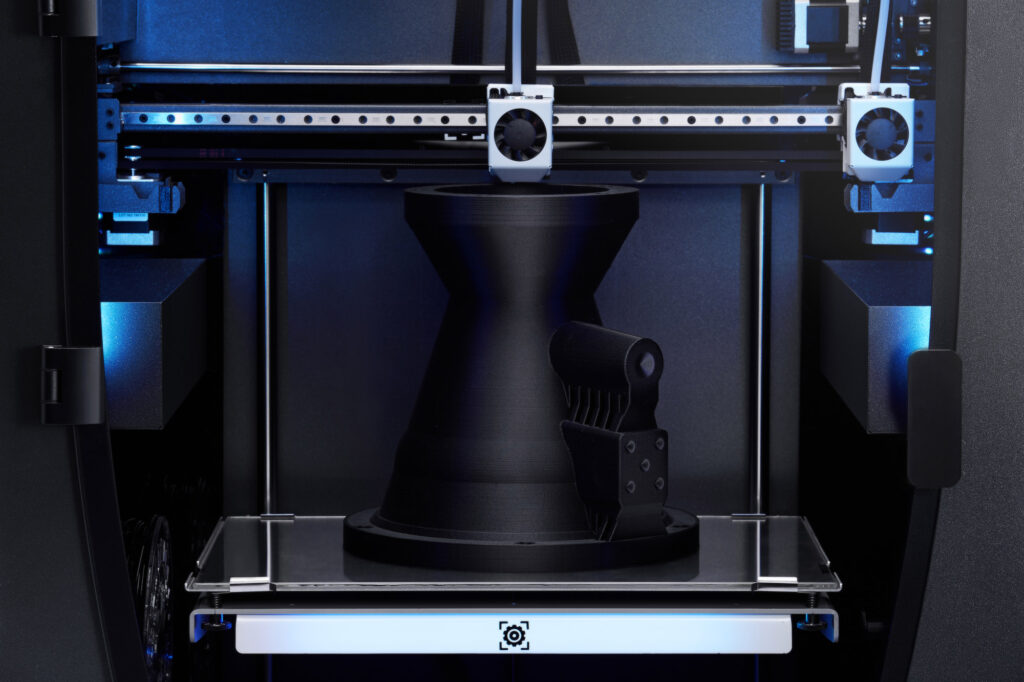
The mainboard as the mastermind of 3D printer parts
First, we have the brains of the operation; otherwise known as the mainboard. This has the firmware loaded inside and can therefore instruct the printer on what to do at every step of the way, whether that’s sending a print job or moving an axis. Nowadays, mainboards come in the form of small computers with the necessary software but the concept remains the same.
You could say that this is the most important part of the printer… if the mainboard works but a component doesn’t, we’ll be able to get around it and find a solution, but without it, we’re lost!
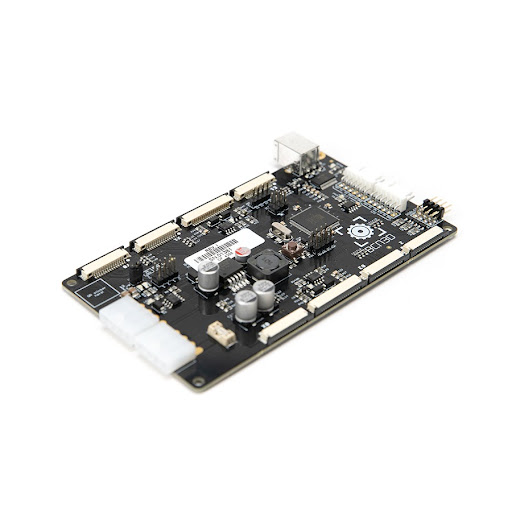
The abilities of the axes
The next 3D printer parts we will focus on are the axes; in total, there are 6. Two of these are extruders, that are in charge of:
- moving
- loading
- and then extruding the filament.
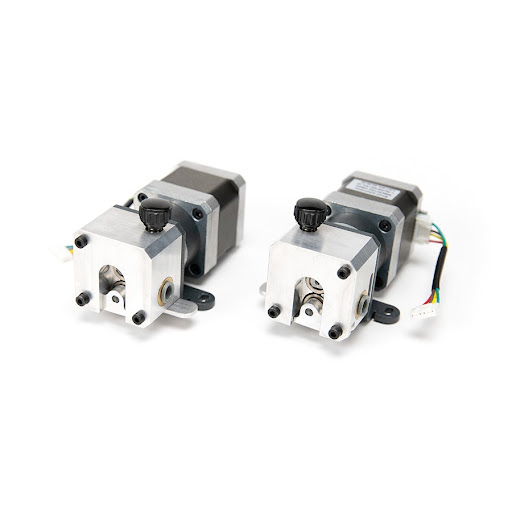
Then, we have the X, Y, and Z axes. While X and Y draw the shape of the model as we see it from above, Z moves down each layer so that we can print the model to the height that we desire.
All of these axis-related components consist of the same structure. A small board, known as a driver, is in charge of moving the motor. The driver receives and interprets its instructions from the mainboard in the form of lines of code.
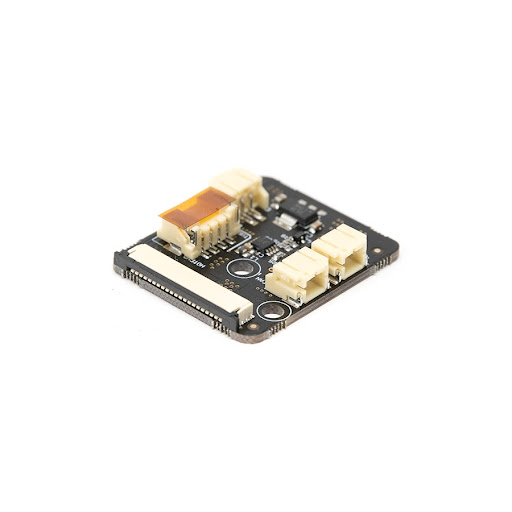
The 3D printer parts for heating
There are 2 heating elements in a 3D printer. The bed is a simple structure in the form of a switch, which turns on and off for when the bed needs to preheat or cool down, and a thermal pack that heats up the entire printing surface.
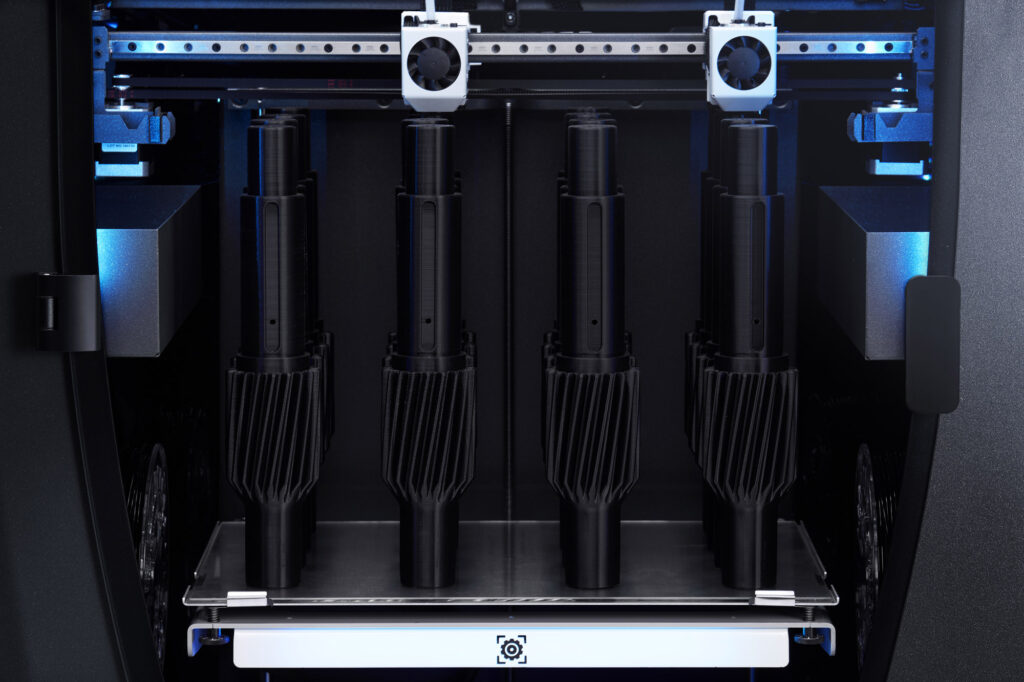
The other is the hotend, the part that heats up in order to melt the filament. Hotends have a cable, extruder board in the center, and then the hotend itself. The extruder board controls the cooler fan, an important factor as we only want the filament to melt at the tip of the hotend in order to avoid clogging issues. A port on the back reads the temperature and automatically turns on the fan when it reaches over 90°.
Tips for choosing the right hotend:
- Make sure you choose the hotend family compatible with your printer
- To print faster, use a bigger nozzle, but beware that this will compromise the quality
- For small details, use a smaller nozzle
- Always use our 0.6mm Hotend X when printing fiber-filled materials
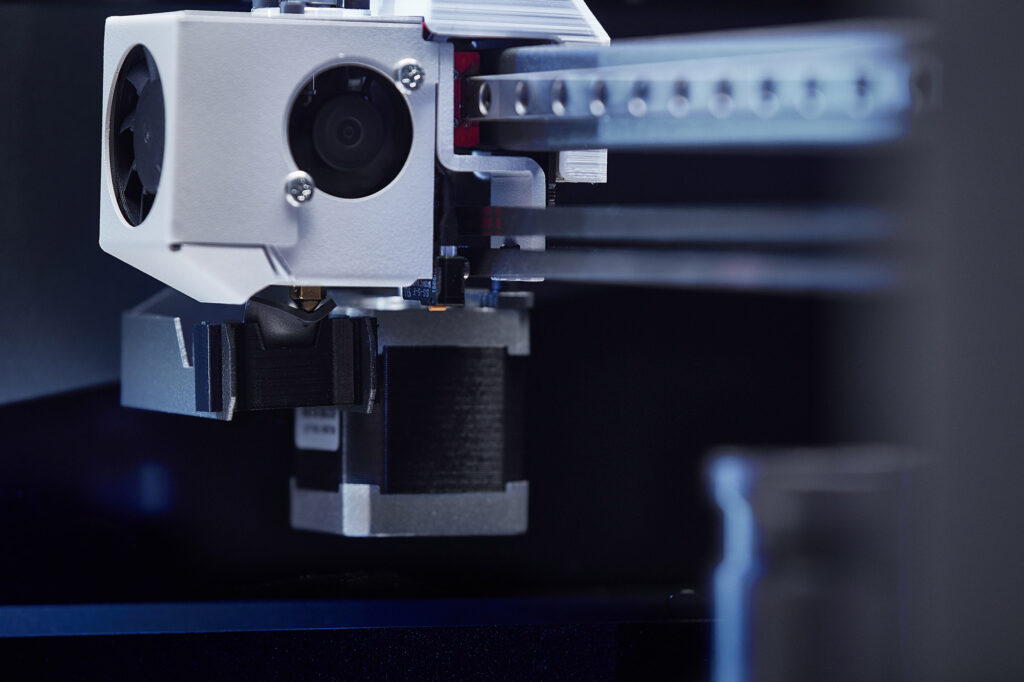
In the case of BCN3D printers, there are two printing heads as a result of our IDEX technology. This allows you to print with two heads simultaneously, mix and match materials on one model, and subsequently double your productivity.
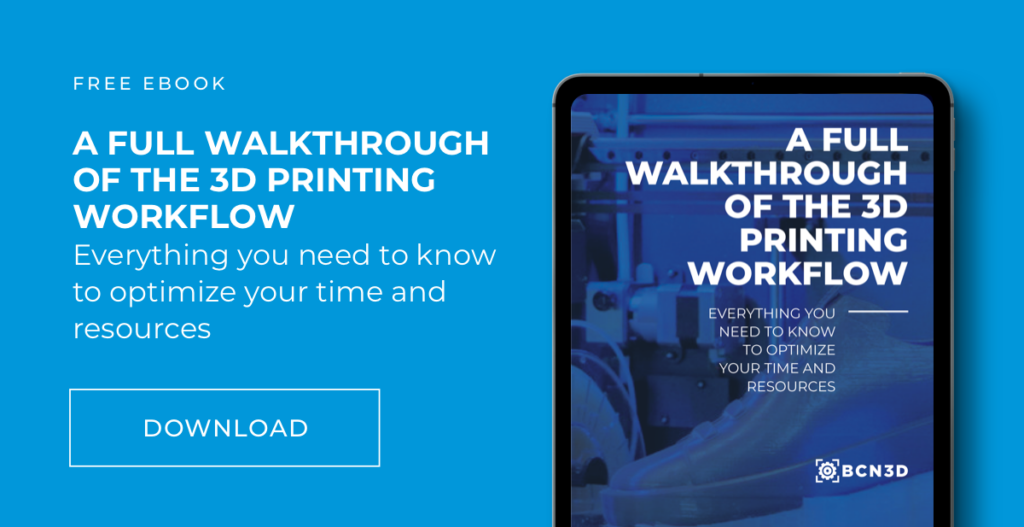
A special mention of the BCN3D Epsilon Series
The Epsilon series printers have an extra component: a full enclosure. This provides the perfect environment for those more technical materials which require the maintaining of a constant temperature. The enclosure entails a couple of extra parts, the first being the thermistor. This is positioned inside the chamber to read the temperature. A HEPA filter serves to catch fine particles of materials with a percentage of fiber materials such as carbon fiber and glass fiber, which are potentially harmful to your health.
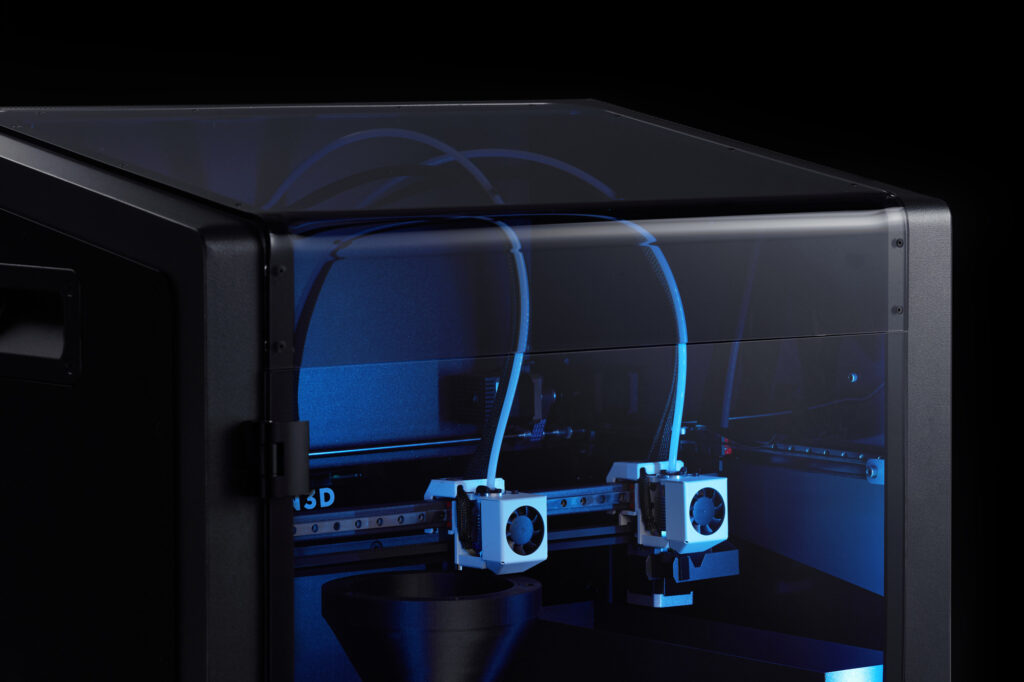
We hope that through this article you’ve gathered an understanding of the 3D printer parts, their individual functions, and how they interact. You can use this newfound knowledge to hopefully implement 3D printing into your business and make informed decisions while doing so. Should you be interested in getting to grips with more aspects of 3D printing, let the BCN3D Academy be your guide.



